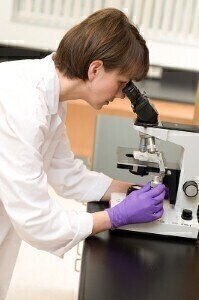Bioanalytical
Stanford scientists develop new fluorescence imaging technique
Dec 06 2012
Scientists at Stanford University have devised a new fluorescence imaging technique, which investigates the blood flow in living animals, allowing researchers to gain a better understanding of arterial diseases and therapies.
Entitled near infrared-II imaging, the technique involves injecting water-soluble carbon nanotubes into a subject's bloodstream, with a mouse being used for the current work.
A laser is then shined with a NIR light over the animal, causing specially designed nanotubes to fluoresce at a longer wavelength of 1-1.4pm, which is then detected to find out the blood vessels' structure.
As a result of the longer wavelengths offered by the nanotubes, workers are able to benefit from crystal clear images of the tiny blood vessels, while the detector also registers less background noise.
Hongjie Dai, professor of chemistry; John Cooke, professor of cardiovascular medicine; and Ngan Huang, acting assistant professor of cardiothoracic surgery developed the technique, which also boasts a fast image acquisition rate, meaning that researchers can easily measure blood flow in near real time.
Mr Dai explained: "For medical research, it's a very nice tool for looking at features in small animals. It will help us better understand some vasculature diseases and how they respond to therapy, and how we might devise better treatments.
"We'd like to find something smaller than the carbon nanotubes but that emit light at the same long wavelength, so that they can be easily excreted from the body and we can eliminate any toxicity concerns."
Since the technology is able to study blood flow information and blood vessel clarity, it will be helpful when it comes to studying animal models of arterial disease.
News of this development comes after fluorescence technology was used to investigate how bleeding is caused in haemophilia patients.
A study published by Cell Press on November 20th in the Biophysical Journal found blood clots spread in travelling ways, which could lead to new strategies that provide an effective treatment for the condition.
Posted by Neil Clark
Digital Edition
Chromatography Today - Buyers' Guide 2022
October 2023
In This Edition Modern & Practical Applications - Accelerating ADC Development with Mass Spectrometry - Implementing High-Resolution Ion Mobility into Peptide Mapping Workflows Chromatogr...
View all digital editions
Events
May 05 2024 Seville, Spain
May 15 2024 Birmingham, UK
May 19 2024 Brno, Czech Republic
May 21 2024 Lagos, Nigeria
May 23 2024 Beijing, China














